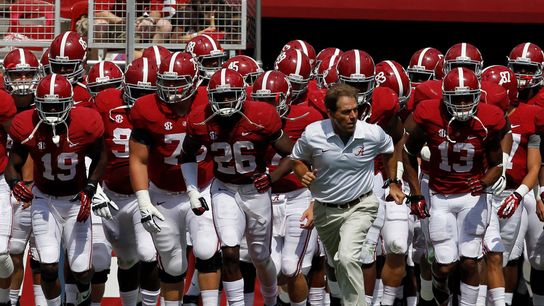This much is certain: If universities are not open in the fall, college football is not happening in the fall. No one has etched that policy into a stone tablet, but when the 10 FBS commissioners told Vice President Mike Pence as much in a conference call, that was as close to as official decree as we're going to get.
As we've all learned in the past six (or has it been seven?) weeks, shutting things down was the easy part. Opening them back up, particularly on a timeline that allows the 2020 college football season to be played as scheduled, will be immensely more difficult.
Dozens of colleges across the country have announced in recent days they "plan" or "intend" to re-open in the fall, but that's far from a guarantee. Announcements you're seeing in April are schools maneuvering to secure their incoming freshman classes -- and the housing and dining dollars their enrollment brings. We won't know for sure whether or not students will be in dorm rooms until this summer. (Importantly for pseudo-Ivies at the FBS level like Stanford, Rice, Duke and Northwestern, Harvard is among this group.)
Those decisions will be made by university presidents in conjunctions with mayors, governors, and public health directors. Each step beyond the university is another step removed from the consequences and fallout of a potential college football season.
It's become apparent that some sort of college football season will be played, but the web of complications therein are more tangled than a thousand black widows could ever weave.
For starters: What happens if some schools are ready to play football in August and others are not? What if some conferences are on board, and others aren't?
To boil it down further: If Alabama, if Georgia, if Florida, if LSU, if Texas A&M are all ready to play ball come September, does anyone really expect the SEC to sit out the entire fall because Vanderbilt isn't allowing students on campus until January? If the entire SEC and Big 12 are ready to roll, are they going to sit on their hands because the Pac-12 isn't ready?
Seriously, can you imagine telling Nick Saban that his team can't play ball because, essentially, the governor of Washington state said no? Boiling down further, what if Arizona brings its players back to campus in July, but USC -- who announced Tuesday it will continue online learning through its second summer session, which ends Aug. 11 -- doesn't bring players to campus until Aug. 12? Can Arizona hold team workouts in the interim?
Now flip the dynamic in your mind. Imagine if Indiana, Purdue, Illinois, Northwestern, Rutgers and Maryland are ready to play, but Michigan and Ohio State aren't. Does anyone believe the Big Ten would play in that circumstance?
Ask 100 different people, you're likely to get 100 different answers.
“I could definitely see scenarios where all but one or two schools [from a conference] are ready to proceed and a season is played without them," a Group of 5 AD told Stadium. "I think the Group of Five would follow the Power Five’s lead and the Power Five conferences would defer to the TV networks to determine which [schedule] is preferable.”
The breakdown could fall on political lines, where blue states move more cautiously to resume life as we once knew it than red ones. A number of states have joined forces to re-open their economies in conjunction, but such moves did not consult conference maps. A Western States Pact includes California, Oregon and Washington, for instance, but left out Arizona, Utah and Colorado. The governors of Michigan, Ohio, Wisconsin, Minnesota, Illinois, Indiana and Kentucky will work in concert, but Iowa, Nebraska, Pennsylvania, New Jersey and Maryland were not part of the group.
Outside of sports, all of this makes sense. The ground conditions in New Jersey have no bearing on whether Iowa will open its cities and the University of Iowa will resume in-person classes, but New Jersey governor Phil Murphy holds tremendous sway over whether the Hawkeyes can play their season as scheduled.
“It’s in everyone’s interest for it to be coordinated and there not to be turf battles,” Pac-12 commissioner Larry Scott said recently, “and so far I’ve seen it work that way.”
With no central leadership structure, this process will be led by the Power 5 conferences. And the Power 5 conferences are led by their most powerful members. No one knows anything at this point, and it's April 29 as I write this, but I feel comfortable saying this: if Alabama and its upper-class neighbors in the SEC want to play this fall, the SEC will find a way to play this fall. And the chips will fall from there.
In short, it's easy to imagine all 66 Power 5 schools sitting around the Zoom-ified campfire singing kumbaya until one, or two, or three governors hold the entire sport hostage.
SEC commissioner Greg Sankey said recently the he and his Power 5 colleagues are "literally building the bridge as we cross," then writing the manual for said bridge as the bricks are laid.
Sankey and the commissioners had better write that manual with the idea in mind that some schools will cross the river in time to play football games by Labor Day weekend and their peers in different conferences, different states or even different cities will not.
